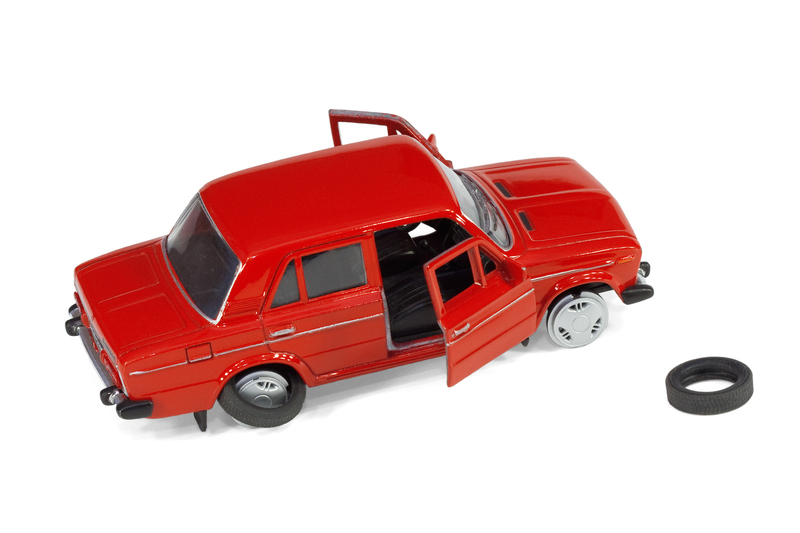Historical Approaches to Waste Management: A Time Capsule
Waste management has been a challenge for human societies since the dawn of civilization. From early settlements to bustling metropolises, the methods by which people deal with their refuse have both reflected and influenced advancements in society, technology, and environmental awareness. This in-depth article delves into the evolution of waste management throughout history -- a true time capsule of our changing relationship with waste.

The Origins of Waste Disposal: Primitive Societies
Thousands of years ago, our ancestors produced minimal waste. Hunter-gatherer cultures largely consumed biodegradable materials, so their primitive waste management practices consisted mainly of discarding food remains directly onto the ground, where nature swiftly recycled them. Other by-products, such as bones or broken tools, were similarly absorbed by the environment.
- Natural Decomposition: Early societies relied on the Earth's natural decomposition cycles.
- Minimal Impact: Waste volumes were small, and environmental damage was negligible.
- Resourcefulness: Many objects were reused or repurposed, reducing waste generation.
These rudimentary waste disposal systems highlight how close early humans lived in harmony with nature, in marked contrast to later epochs.
The Rise of Urban Centers: Ancient Civilizations and Refuse Management
Waste in Ancient Mesopotamia and Egypt
The emergence of urbanization in Mesopotamia (circa 4000 BCE) and ancient Egypt brought new challenges. With higher population density, local environments could not easily process waste. Archaeological evidence indicates some of the oldest organized waste management strategies were implemented here.
- Designated Dump Sites: Early cities often allocated areas outside city walls as rubbish dumps.
- Grain Chaff and Animal Manure: Organic materials were sometimes collected for use as fertilizer or fuel.
- Household Cleaning: Residents would sweep debris into the streets or waterways.
Ancient societies began to confront the problem of localized pollution, shaping the first basic waste management solutions in world history.
The Roman Empire: Innovators in Waste Infrastructure
The citizens of Ancient Rome (c. 753 BCE - 476 CE) pioneered urban sanitation. They constructed vast systems, some of which remain marvels of engineering today.
- Cloaca Maxima: One of history's earliest and grandest sewers, the Cloaca Maxima channeled wastewater from Rome's streets to the Tiber River.
- Street Cleaning: Official street cleaners, or scoparii, regularly swept and collected urban debris.
- Public Policies: Laws required households to dispose of waste in designated areas, and offenders faced fines.
These steps marked significant advancements in historical waste management practices and public health.
Medieval Methods: Navigating Neglect and Innovation
The decline of the Roman Empire saw much of their sophisticated knowledge lost. In Medieval Europe, sanitation conditions worsened as cities grew but waste infrastructure failed to keep pace.
The Challenge of Waste in the Middle Ages
Medieval towns and cities often became notorious for their filthy streets, overrun with refuse, animal dung, and even human excrement.
- Open Gutters and Ditches: Waste was commonly thrown into open drains running through streets.
- Midden Heaps: Households deposited waste into piles in backyards or alleys, called middens.
- Night Soil Men: In larger towns, "night soil men" collected human waste from cesspits at night to sell as fertilizer.
Poor waste management contributed to frequent disease outbreaks, including the infamous bubonic plague. However, these grim conditions spurred new regulations and remedies.
Early Regulations and Responses
Toward the end of the Middle Ages, some towns introduced laws prohibiting refuse dumping and requiring regular street cleaning--a crucial step in the history of rubbish management.
- Mandatory Clean-Up Days: Communities scheduled days when everyone was required to help tidy the streets.
- Penalties: Offenders faced fines, public shaming, or other sanctions.
The Industrial Revolution: Escalating Waste and Early Solutions
Urbanization and Pollution
By the 18th and 19th centuries, the Industrial Revolution radically changed the scale and type of waste generated by society. Cities swelled as people flocked to new jobs, and factories began producing unprecedented volumes of both industrial and municipal refuse.
- Solid Waste Surge: New materials--glass, metals, and chemicals--became part of the waste stream.
- Air and Water Pollution: Industrial by-products contaminated local resources.
- Public Health Risks: Outbreaks of cholera and typhoid were linked to poor sanitation.
These trends demanded a transformation in waste management practices.
The Birth of Modern Waste Collection
Nineteenth-century cities like London led the charge with new infrastructure:
- Dustmen and Dust Yards: Collectors called "dustmen" gathered household ashes and refuse, which was separated and resold at "dust yards."
- Landfills: The first municipal landfills were established, although typically on the outskirts of cities.
- Sewage Systems: Innovations like Sir Joseph Bazalgette's London sewer network significantly reduced disease.
- Public Policy: The UK's Public Health Act of 1875 mandated that all homes have access to local waste collection services.
This period marked the beginnings of systematic rubbish management systems recognizable in contemporary society.
20th Century Innovations: Toward Modern Waste Strategies
From Landfills to Incineration
The last century witnessed a dramatic increase in waste generation--especially non-biodegradable plastics--and a corresponding evolution in disposal methods.
- Sanitary Landfills: New landfill designs included liners and gas collection to minimize environmental impact.
- Incineration Plants: Burning waste to reduce volume and produce energy became popular in many cities.
- Recycling: Efforts to recycle paper, metal, and later plastics gained momentum, particularly after WWII.
Increased awareness of pollution and its consequences during the 1960s and 70s prompted stricter regulations and the birth of environmental movements.
The Rise of Integrated Waste Management
In the latter half of the 20th century, more comprehensive approaches emerged, combining waste reduction, recycling, composting, and safe disposal.
- Municipal Recycling Programs: Curbside recycling services made separating and reusing materials easy for homeowners.
- Composting: Organic waste, like food and yard trimmings, was processed into soil amendments.
- Hazardous Waste Regulation: New laws dictated strict procedures for disposing of toxic materials and e-waste.
Traditional Waste Practices Around the World
While much of the above history traces Western waste management, many other cultures developed unique systems:
- Japan: Since the Edo period, cities like Edo (modern Tokyo) employed detailed waste separation and recycling regulations, a precursor to today's strict sorting requirements.
- Indigenous Peoples: Many indigenous communities around the world practiced zero waste lifestyles, reusing or composting virtually everything.
- Indian Subcontinent: Traditional "kabadiwalas" or waste pickers manually sorted and recycled urban trash long before formal recycling programs.
Each historical approach to waste management reveals cultural priorities and adaptability, contributing to the global mosaic of environmental stewardship.
The Digital Age and Beyond: Future Trends Inspired by History
Learning from centuries of experimentation, today's waste management systems blend the best historic practices with cutting-edge tech. Smart bins, AI-powered sorting centers, and circular economy principles are just a few examples of contemporary waste solutions.
- Zero Waste Initiatives: Inspired by both ancient resourcefulness and modern technology, zero-waste cities seek to eliminate landfill use entirely.
- Circular Economy: Reclaiming, reusing, and remanufacturing goods minimize waste and conserve resources.
- Urban Mining: Recovering precious metals and materials from electronic waste creates new value streams.
Informed by the past, these approaches strive to balance progress with environmental responsibility--a lesson echoed throughout the history of waste management.

Lessons from the Past: Key Takeaways of Historical Waste Management
- Adaptability: Every era tailored its waste management techniques to available technology, culture, and population needs.
- Environmental Awareness: Modern environmentalism has deep historical roots; past societies often prioritized reuse and recycling out of necessity.
- Public Policy: Legal frameworks consistently play a crucial role in shaping how waste is handled.
- Innovation: From the Cloaca Maxima to modern biogas plants, every generation strives for cleaner, more efficient solutions.
By understanding historical approaches to rubbish and refuse management, we not only honor the lessons of our ancestors but also gain perspective on today's waste challenges and how to address them sustainably.
Conclusion
The story of waste management is a remarkable journey from simple disposal in early societies to the sophisticated, multifaceted systems we know today. As global populations and consumption grow, the wisdom gleaned from this time capsule of waste management practices can guide us toward a more sustainable future. By looking back--learning from both successes and failures--we are better equipped to face the waste challenges of tomorrow.
If you enjoyed this comprehensive look into the history of waste management, explore related articles on sustainable practices and the future of environmental stewardship!